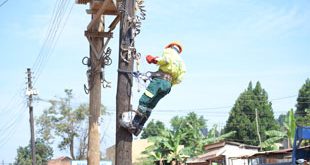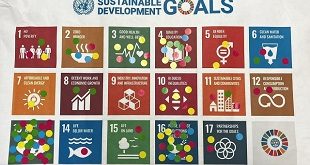
By Morris Ogenga-Latigo
The fact about oil in Acholi should be made widely known to Ugandans
There has been reluctance on the part of Acholi people to engage in the head-spinning oil pipeline debate that various newspapers have covered over the recent past (see `Oil firms, govts differ on export pipeline’, The Observer, May 27, 2015; `Uhuru and Museveni strike deal on route for oil pipeline’, The East African, August 11, 2015; `Oil firms prefer Tanga pipeline route to Lamu’, The East African, September 13, 2015; `Total’s bid for a Tanzania pipeline route rejected’, The East African, September 19,2015; `Tanzania, Uganda sign Tanga oil pipeline agreement’, The East African, October 13, 2015; `Tanzania’s route throws race for Uganda’s oil pipeline wide open’, The Observer, October 15, 2015; `Fight over oil pipeline’, The Independent, October 27, 2015).
Our reluctance is because, under the Joint Acholi Leaders’ Forum (JALF), we in June 2014 submitted a memorandum to President Museveni on various issues on oil. They included Acholi as a crucial host to the oil finds that most Ugandans do not know about, the loop-sided planned development of Oil & Gas infrastructure that leaves Acholi and the North completely out of the picture, our proposal for a “Trans-North Oil Export Pipeline”, and the questions of royalty and representation on national oil bodies to engender equity and a sense of shared ownership.
We await the response of the President and his government to us before publically airing our concerns. However, while we wait even if 16 months have elapsed since, current debate on the oil pipeline route and planned oil infrastructure development being pushed on the falsehood that Uganda’s largest oil finds are in Bunyoro, leaves us with no option but to speak out.
ATWCOG and its role
In November 2013, Acholi leaders, under the JALF, instituted the Acholi Technical Working Committee on Oil and Gas (ATWCOG). This committee was tasked to, among others, “study, on behalf of the Acholi people, all issues regarding oil and gas in Acholiland- taking into account all government policies, laws and actions so far taken in order to establish a knowledge-based framework for objective engagement with government, oil companies, all stakeholders, and Ugandans generally, on matters of oil and gas in the Acholi Sub-region”.
To build its knowledge, ATWCOG scrutinised all manner of documents; traversed the country; and visited and met with key stakeholders- Government, Petroleum Exploration and Production Department (PEPD), NEMA, UWA, Bunyoro Kingdom and its local governments, CNOOC, Total and Tullow oil companies and NGOs.
The committee presented its findings to a gathering of Acholi leaders at the “Second Acholi Conference on Oil and Gas” held in Gulu on May 9, 2014. President Museveni was invited to open the meeting but could not make it because of prior engagement.
Of the various issues presented, discussed and agreed upon at that conference, the most relevant to ongoing debates on oil in Uganda were: oil discoveries in Acholi, oil infrastructure and the export pipeline route, and royalty and representation on national O&G bodies.
Oil discoveries in Acholi
In the search for information on oil finds in Acholiland, ATWCOG could not access official records on, nor obtain clear answers from PEPD officials to the question of “how much oil has been discovered in Acholi”. The committee relied on anecdotal evidence.
Firstly, when Heritage that operated the A1 block in Acholi divested its interest to Tullow/Total, the over US$2billion paid told us that Acholi had huge oil potential. At that time, the declared oil finds was around 2.3 billion barrels, and none from Acholi. Upon Total’s takeover, and with no new major finds announced in Bunyoro or elsewhere, however, the declared discoveries jumped rapidly first to 3.5 billion barrels and later to the current 6.5 billion barrels, but without the sources of those additional barrels being declared.
Secondly, justification for locating the Oil Refinery in Kabaale, Hoima district, was that it would draw crude from Kingfisher and other oil fields then declared discovered in Bunyoro. When we accessed the Foster Wheeler report on the refinery, however, it turned out that, except for the first few years of its operation when it will depend on crude from the Kingfisher field, for much of its 30-40 year life the refinery will actually depend 70-90% on crude from Acholi oil fields, specifically Jobi and Jobi East fields (see graph).
Interestingly, while on official oil maps these oil fields are referred to as “Jobi” and “Jobi East”, in the Foster Wheeler refinery report, the oil fields are referred to as “Buffalo” and “Buffalo East”- Anglicised “Jobi” names that non-Lwo speakers would not know!
On the basis of the above, we can safely surmise that the oil fields of Acholi possibly account for up to 4 billion barrels, i.e. 60%, of Uganda’s declared oil finds. Lyec field alone contains more than 1 billion barrels of oil and these oilfields (Lyec, Jobi, Jobi East) are the most accessible in depth. Some are interconnected and actually form huge pools of oil deposits the extraction of which will require very few output pump-heads. So why have these facts about oil in Acholi not been made widely known to Ugandans?
 The Independent Uganda: You get the Truth we Pay the Price
The Independent Uganda: You get the Truth we Pay the Price



